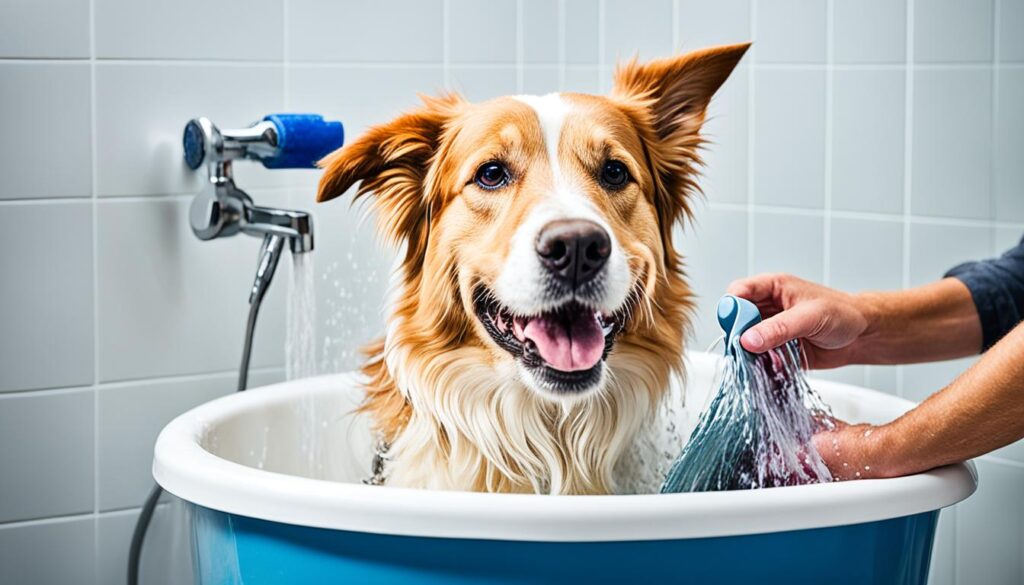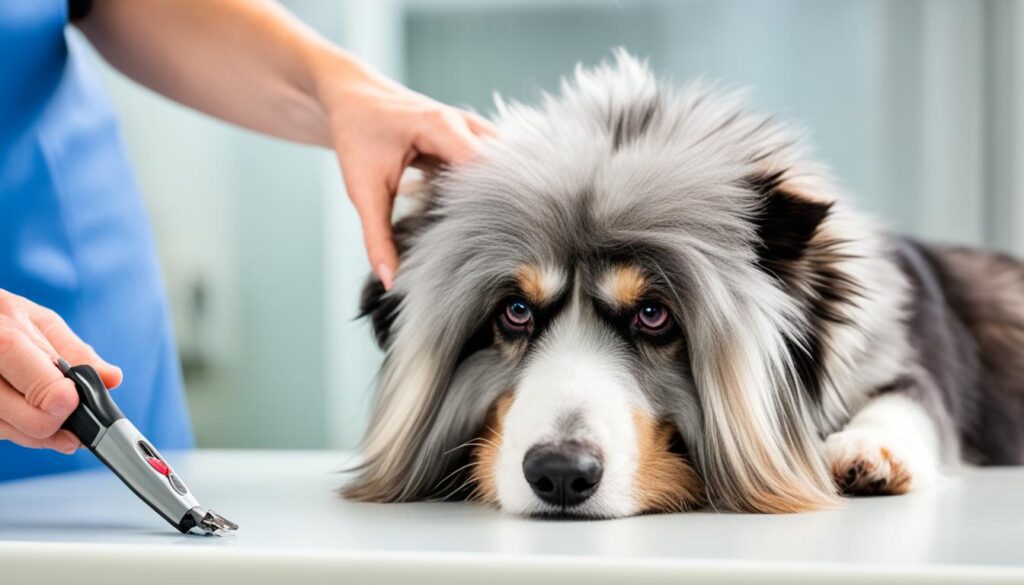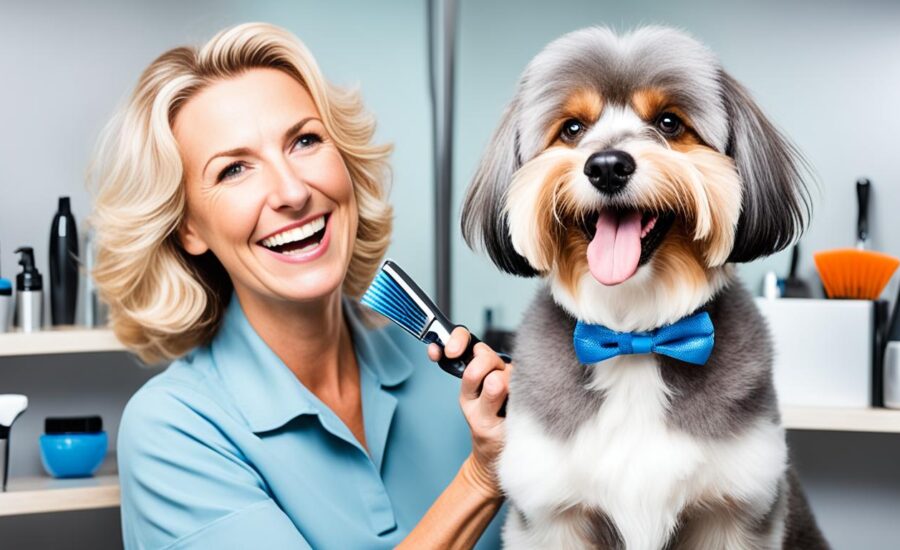Have you thought about how your way of grooming your pet might be wrong or even harmful? It’s scary, but true. Many pet owners make pet grooming errors to avoid without knowing. It’s not all about looking good. Your pet’s health depends on how well you groom them. Knowing the common mistakes to avoid when grooming your pet is key for their health and your peace of mind.
Grooming does more than make your pet look nice. A shiny coat and trimmed nails come from good care. But, did you know grooming is also important for spotting health problems early? Ignoring grooming can make your pet uneasy and stressed. We’ll guide you through the right ways to groom. This way, every brush and wash helps your pet’s health.
Key Takeaways
- Awareness of pet grooming mistakes prevents health issues.
- Regular grooming sessions enhance pet health and owner-pet bonding.
- Knowing the common errors to avoid is critical for pet grooming.
- Investing time in learning proper grooming techniques is beneficial in the long run.
- Educating yourself on grooming can reduce pet anxiety during social interactions.
Understanding the Importance of Consistent Grooming
For pet owners, having a grooming routine is essential. It’s not just about making pets look good. It’s vital for their health and happiness. Following pet grooming best practices means more than keeping a pet’s coat nice. It ensures their well-being too. Getting pets groomed regularly prevents painful mats. These are dense fur knots that pull at the skin and hurt your pet.
Professional groomers are key in grooming pet tips. They offer more than a simple haircut. They can find health problems that pet owners might miss. When grooming, they might spot lumps, skin issues, or bugs. Catching these early can be key for treatment. This shows the importance of knowing pet grooming do’s and don’ts. Not grooming regularly can lead to burrs or ticks in the fur. This causes discomfort or more serious issues needing a vet.
Here are key grooming pet tips:
- Brush Regularly: Brush your pet a few times a week. This removes dirt, spreads oils, and stops mats.
- Check the Skin: During grooming, look for bugs, redness, or soreness.
- Nail Trims: Cutting nails often keeps your pet’s paws safe. It stops nails from growing too long and splitting.
It’s clear that a consistent grooming routine is crucial. It keeps your pet clean and nice looking. More importantly, it prevents health problems. Understanding pet grooming do’s and don’ts is a must for all pet owners. So, make sure you keep up with your pet’s grooming. It’s a way to show them love and care that’s more than just skin deep.
The Right Way to Brush: Pet Grooming Best Practices
Learning how to groom your pet right is key to their happiness and health. It’s not just about making them look good. It’s about using the right grooming tips that fit your dog’s needs. You should avoid common grooming mistakes and follow best practices for a healthy grooming session.
Selecting the Proper Brush for Your Dog’s Fur Type
Every dog’s coat is different and needs the right tools for grooming. A slicker brush works well for dogs with a thick double coat. But a bristle brush is better for dogs with short hair. Look at the table below to find the best brush for different types of dog fur:
| Fur Type | Recommended Brush | Brushing Purpose |
|---|---|---|
| Short, Smooth Coat | Bristle Brush | Removes loose hair |
| Thick Double Coat | Undercoat Rake & Slicker Brush | Detangles & reaches undercoat |
| Curly or Wavy Coat | Pin Brush & Comb | Defines curls & prevent mats |
| Long, Silky Coat | Steel Comb & Slicker Brush | Detangles & smoothens fur |
Why Pre-Bath Brushing Can Prevent Matting
Brushing your pet before a bath is a smart move. It stops tangles and knots from getting worse. Water can make tangled hair tighten into mats, which are hard to remove. Brushing before the bath makes the bath nicer and leaves your pet’s coat smoother and cleaner afterwards.
Techniques for Brushing Sensitive Areas
Pets have sensitive spots like behind the ears and the belly. You need to be gentle and patient when brushing these areas. Use a soft brush and avoid pulling by holding the hair near the skin. Brush these spots often to prevent mats caused by movement and dampness.
Pro tip: Always give your pet praise and treats during grooming. This will make them link grooming with good things, helping them stay calm and cooperative.
In short, grooming your pet perfectly is achievable. Knowing about the right tools and techniques is crucial. With these grooming tips, you and your dog are set for a pleasant grooming journey.
Choosing the Proper Clippers for Your Pet’s Needs
Choosing the right pet grooming clippers is crucial for your pet’s health and hygiene. It’s not only about completing the task but ensuring safety, efficiency, and comfort for your pet. This grooming your pet advice focuses on clippers to help you make a wise choice following pet grooming do’s and don’ts.
Different pet hair types need different grooming tools. For example, dogs with thick coats may require a powerful clipper. Pets with finer hair can be groomed with a simpler model. Using the wrong clipper can result in a poor finish and even injuries if it’s not suited for your pet’s hair type.
It’s crucial to maintain your grooming clippers for a smooth cut. Dull blades can pull on the hair, causing discomfort for your pet. This could make grooming stressful for both of you. Keeping your clippers’ blades sharp ensures a clean, easy trim. It’s a key pet grooming do’s and don’ts that is often missed.
“Professional groomers know that quality tools are an investment. By choosing high-grade pet grooming clippers, you ensure the wellbeing of the pets and a professional outcome of your grooming efforts.”
-
For Thick Coats: Use a powerful clipper designed to handle substantial fur without overheating.
-
For Fine Coats: A lighter clipper could provide a neat cut without the unease of a heavy tool.
-
For Sensitive Areas: Opt for clippers with a quiet motor to avoid alarming your pet.
Following these guidelines protects your pet from grooming mishaps. It also saves you from the stress and expense of using bad equipment.
Imagine your pet’s face, looking confident and comfortable after a good grooming session. The right pet grooming clippers can make a big difference. Look for reputable brands and listen to professional advice to find the best options.
Effective Bathing and Rinsing Techniques
Bathing your pet is more than just a task. It’s key for their health and cleanliness. Learning how to bathe your pet well takes focus and knowing what they need. A gentle bath can make your pet feel happy, using the right methods and the best grooming practices.

Setting the Right Water Temperature and Pressure
Start by making sure the water feels just right. It should match your pet’s body temperature. The water pressure must be soft to avoid scaring them. This helps make bath time relaxing and ensures a clean pet without stress.
Ensuring Complete Soap Removal During Rinsing
Getting all the soap out is as important as the wash itself. Leftover soap can cause discomfort and more flaking. Make sure to rinse thoroughly. Use your hands to check that no soap remains.
Containing an Anxious Pet for a Safer Bath Time
Anxious pets can be tricky to bathe safely. Experts suggest pet grooming tips such as using a no-slip mat and keeping treats handy. A gentle restraint and some toys can help keep your pet calm and safe.
| Aspect of Bathing | Importance | Tips for Success |
|---|---|---|
| Water Temperature | Prevents discomfort and potential burns or chills. | Use a thermometer to check the water, aiming for around 102°F (39°C), which is close to your dog’s natural body temperature. |
| Water Pressure | Avoids frightening the pet and provides a pleasant experience. | Start with a low pressure and gradually increase to a comfortable level that the pet tolerates well. |
| Soap Removal | Ensures no irritation or allergic reactions occur post-bath. | Rather than rushing, spend extra time on rinsing, especially under the belly and behind the ears. |
| Containing Anxiety | Ensures safety and reduces the stress of the bathing process. | Practice bath time when the pet is calm, using a soothing voice and rewarding them for cooperative behavior. |
Common Mistakes to Avoid When Grooming Your Pet
If you want to keep your furry friend healthy and looking great, pay attention to some key grooming pet tips. Also, be aware of pet grooming errors to avoid. Sometimes, our efforts to keep our pets clean can lead to discomfort or health problems. Let’s look into pet grooming closely and avoid common mistakes.
The Risks of Over-Bathing Your Dog
Washing your pet too much can remove their natural oils. This leads to dry skin and irritation, affecting their well-being. Experts suggest that the number of baths should match the pet’s coat type and how active they are. This balance helps keep their skin and fur healthy.
Why You Shouldn’t Shave Your Dog During Summer
Shaving your dog in the summer may actually be harmful. Their coat helps control their body temperature and shields them from the sun. Shaving can mess with their body’s natural cooling method. It can make them overheat or get sunburned. Instead, brush them regularly to allow air to flow around their skin.
Missteps in Post-Bath Care: The Drying Dilemma
Drying your pet correctly after a bath is crucial. Whether using a towel or a hairdryer, make sure the temperature is safe. Also, ensure your pet is totally dry. This stops bacteria from growing. For pets with long hair, brush their coat when it’s partly dry. This helps to prevent tangles and gives them a neat look.
| Grooming Step | Common Mistakes | Proper Practice |
|---|---|---|
| Bathing Frequency | Over-bathing | Adjust frequency based on breed and coat type |
| Summer Grooming | Shaving to keep cool | Ongoing brushing to enhance natural temperature regulation |
| Post-Bath Drying | Rough towel drying or high heat blow drying | Gentle towel patting and using a pet-safe hairdryer on a cool setting |
Grooming Pet Tips for Claw and Nail Care
Claw and nail maintenance are key for your dog’s movement and comfort. It’s often overlooked in pet grooming best practices. The process can be stressful for both pets and their owners. Hence, knowing the right pet grooming do’s and don’ts for nail care is vital. These grooming pet tips are crucial for your pet’s well-being.

Determine how often you need to trim your dog’s nails. Like people, dogs’ nail growth rates vary. Experts suggest regular clipping every three to four weeks. This prevents discomfort. Use sharp, dog-specific clippers for clean cuts. Blunt tools could split the nail, hurting your dog.
Avoiding the quick is crucial. It’s a blood vessel in the nail, and cutting it can cause pain and bleeding. It can make your dog fearful of nail trims. The quick is easier to see in light-colored nails, making them easier to trim safely. For dark nails, it’s safer to let professionals do the job.
- Check the claws to find the quick before trimming.
- Trim in bright light, or use a headlamp for better visibility.
- Use treats and soothing words to calm your pet.
- If unsure, cut small pieces off to gradually shorten the nails and avoid the quick.
If nail trimming makes you or your pet anxious, consider seeing a professional. Skilled groomers know how to ease stress during grooming. They offer tips on pet grooming do’s and don’ts. This knowledge helps pet owners develop better grooming practices.
Good nail care is about more than looks. Following pet grooming best practices prevents issues like posture problems and infections. Remember, grooming strengthens the bond with your pet. It’s both a responsibility and an act of love.
How to Handle Your Dog’s Ear and Coat Care
Ensuring your furry friend is happy and healthy involves proper ear and coat care. It’s important to practice key pet grooming best practices. These steps help prevent infections and keep their coat glossy and healthy. We’re here to offer valuable grooming pet tips for all pet owners.
Avoiding Water in the Ears to Prevent Infections
A key pet grooming tip is keeping your dog’s ears dry to avoid infections. Gently placing cotton balls in the ears during baths is recommended. This easy step helps prevent ear issues and saves your pet from discomfort and you from costly vet visits.
Choosing the Right Products for a Healthy Coat
Choosing the right shampoo and conditioner is very important. Look for products with natural ingredients for best results. These are recommended as part of pet grooming best practices. A healthy coat does more than look good. It also protects your dog’s skin.
Strategies for Managing Dogs Prone to Ear Infections
Dogs prone to ear problems need routine ear cleaning with recommended solutions. This is a vital pet grooming best practice. Regular checks and cleaning are key to prevent serious ear infections.
By following these grooming pet tips, your dog’s grooming can be effective and fun. Always use positive reinforcement to make grooming something your dog looks forward to. This makes each session a great experience for you both.
Conclusion
Let’s wrap up our guide by emphasizing the goal: to provide grooming your pet advice that protects their health and strengthens your relationship. Grooming with the right knowledge and tools can be a loving act that keeps your pet agile and looking their best. It’s crucial to use grooming as preventive care, avoiding common discomforts for them. Each grooming session, from brushing to nail clipping, prevents common mistakes to avoid when grooming your pet.
Professional groomers offer a deep understanding and precision that comes with years of experience. They know what makes each pet special. You might not turn into a pro overnight, but learning from experts can help you avoid pet grooming mistakes. These mistakes could harm your pet’s health. Knowing the right tools and how to handle your pet gently is key to their health and happiness.
Grooming does more than make your pets look good; it’s vital for their lifestyle. Let this guide inspire you to keep up a grooming routine that makes your pet happy and clean. Being informed and active in grooming means our pets live better lives. Plus, it adds to their charm and how much we love them.
FAQ
What are some common errors to avoid while grooming my pet?
How often should I groom my pet?
Why is selecting the proper brush for my dog’s fur type important?
Why should I brush my pet before a bath?
What techniques should I use to brush my dog’s sensitive areas?
How do I choose the right clippers for grooming my pet?
What are some effective bathing and rinsing techniques for my dog?
How can over-bathing my dog be harmful?
Why shouldn’t I shave my dog in the summer?
What should I be cautious of during post-bath care?
What are the best practices for claw and nail care?
How do I prevent ear infections during grooming?
What products should I use for my dog’s healthy coat?
What are strategies for managing dogs with frequent ear infections?
Source Links
- https://www.luckypuppygrooming.com/the-top-5-dog-grooming-mistakes-you-should-avoid/
- https://dogloverstowel.com/blogs/news/dog-grooming-mistakes
- https://luckydawgsalongrooming.com/avoid-these-common-dog-grooming-mistakes/

